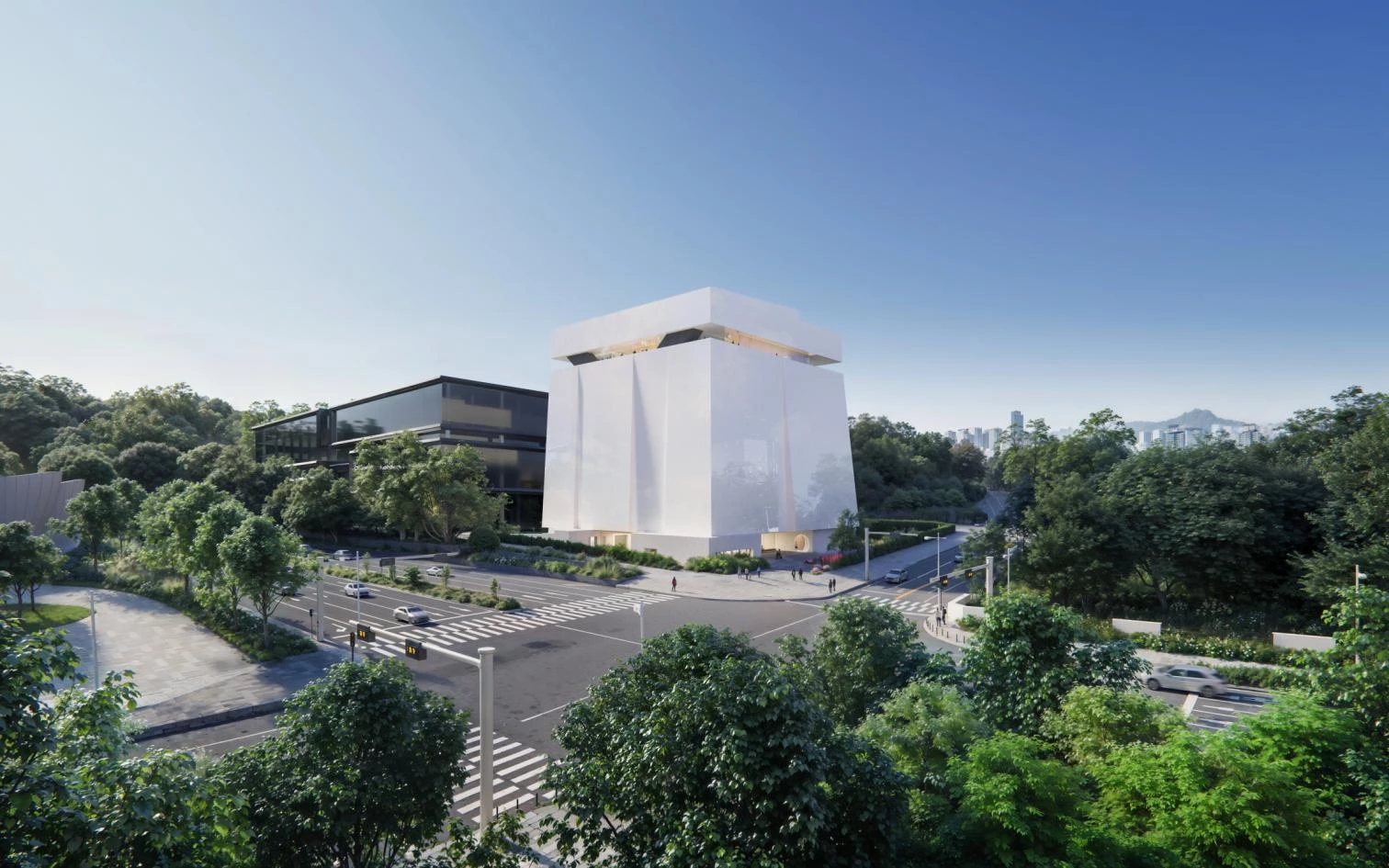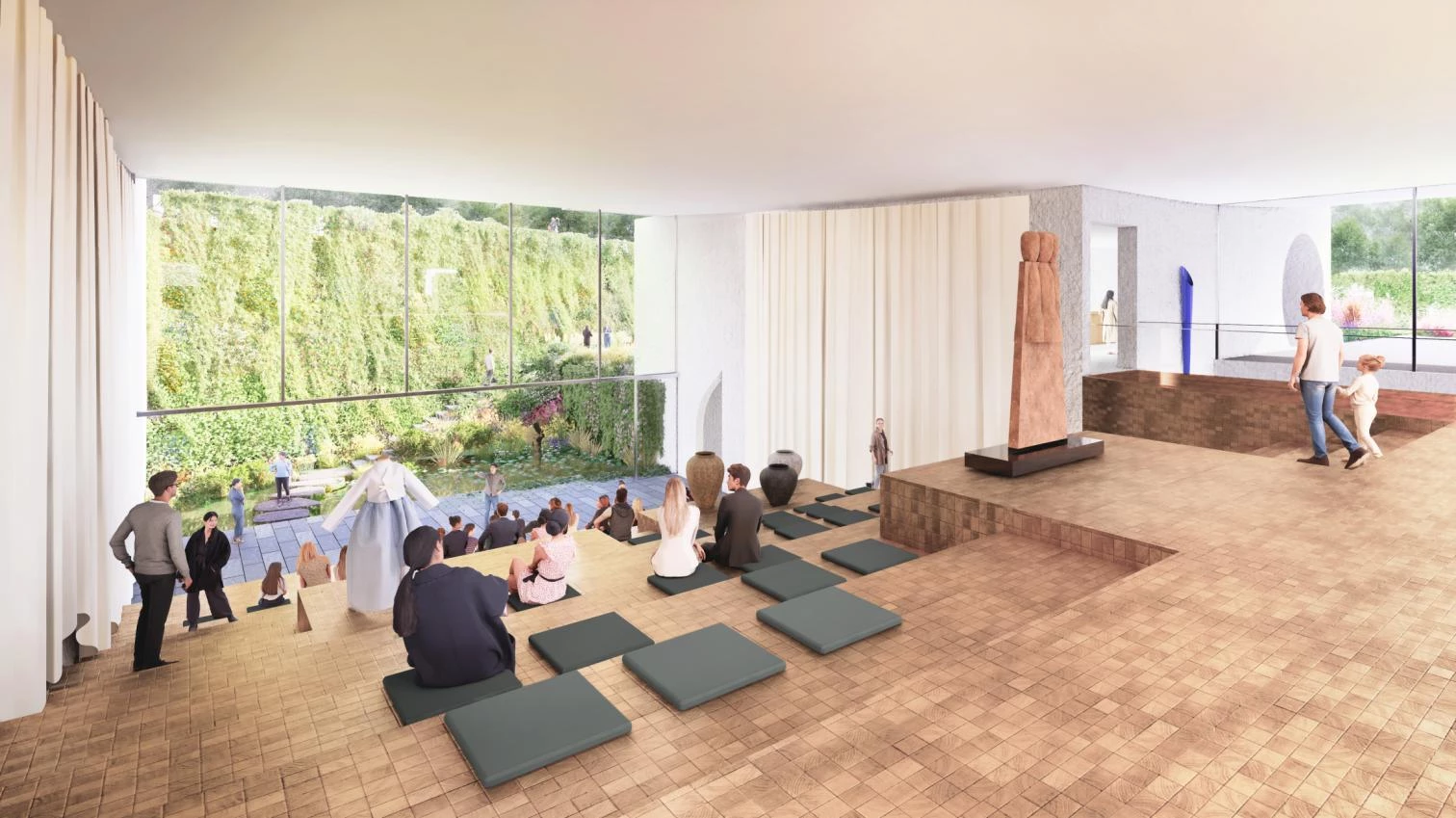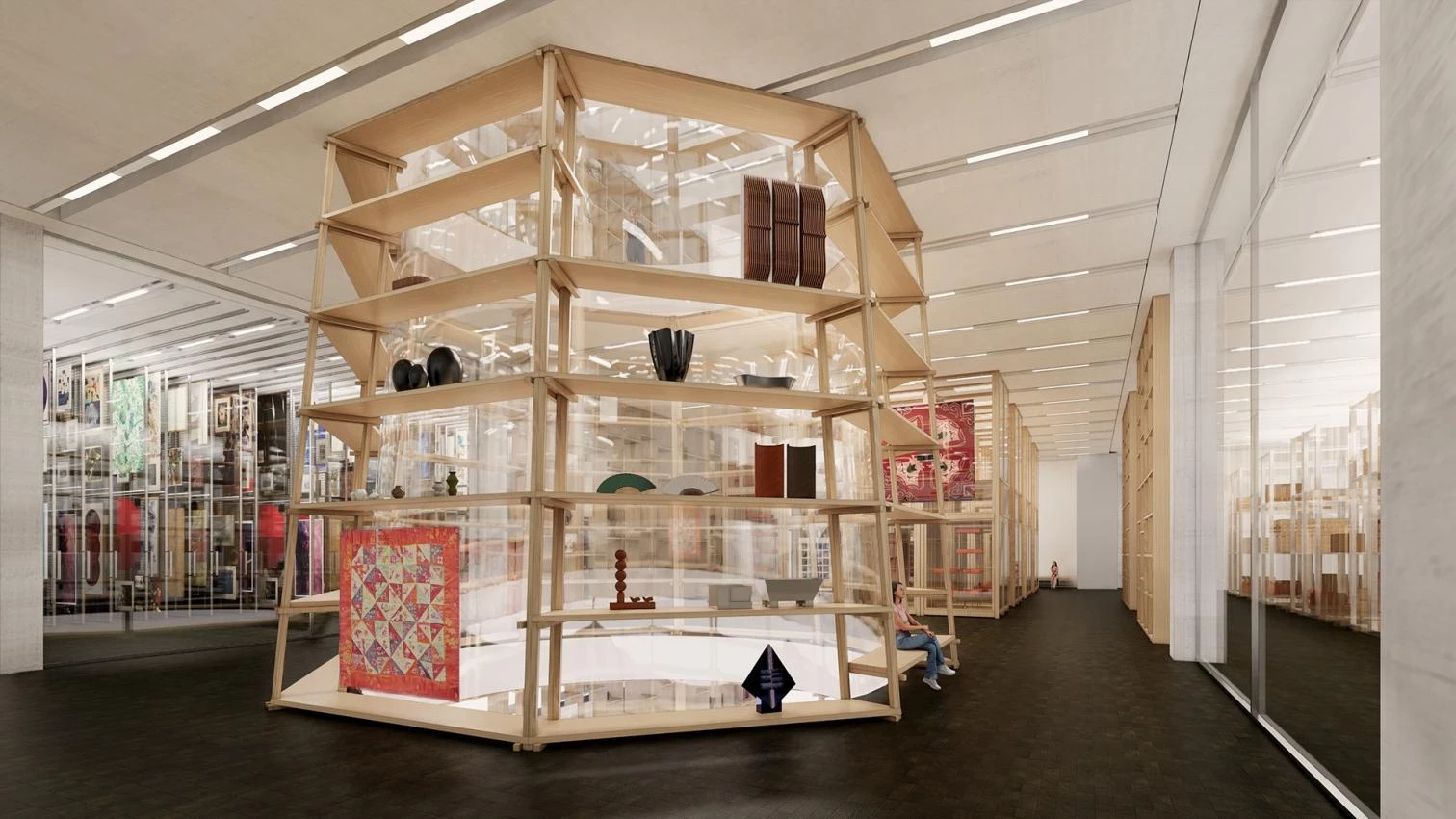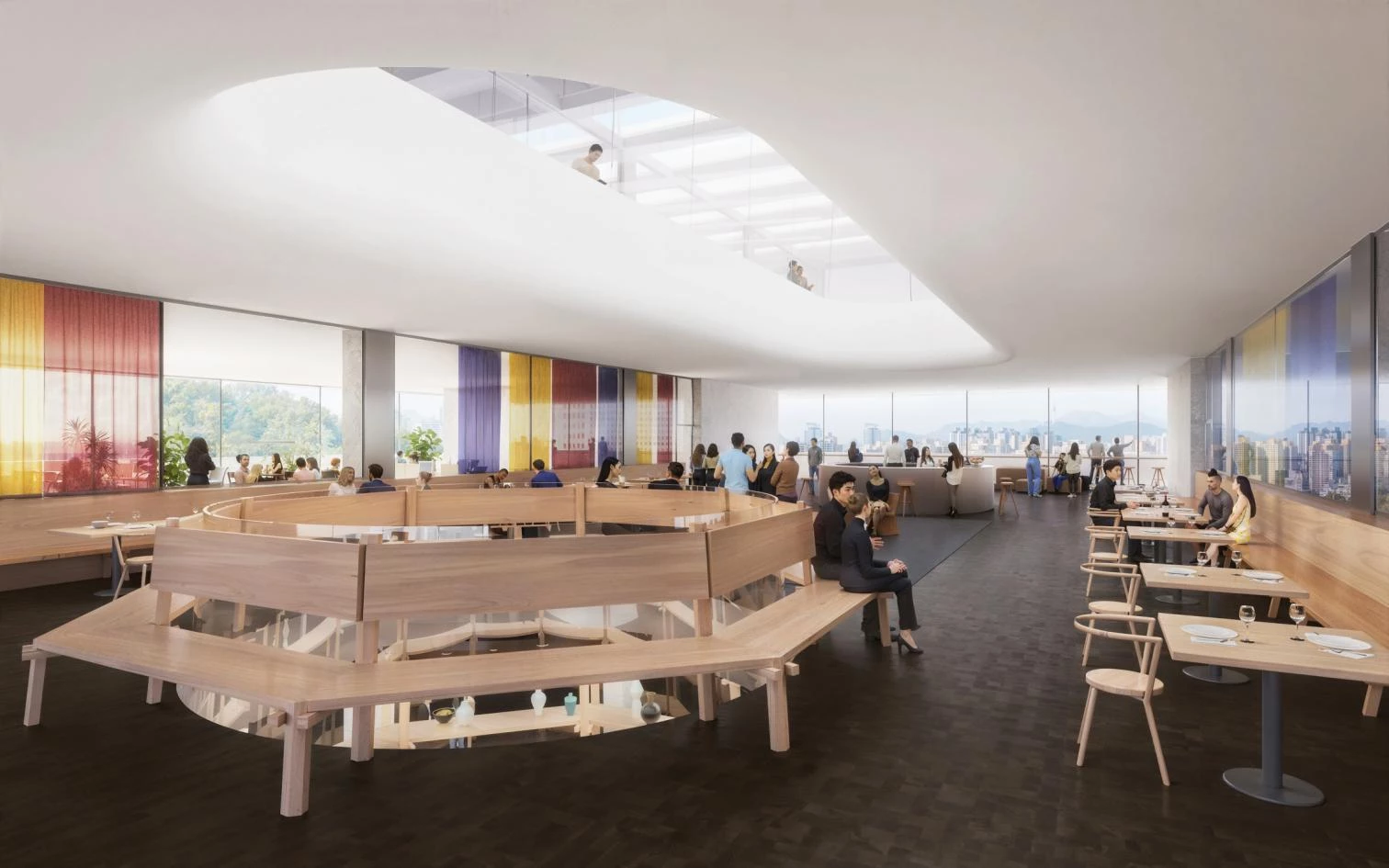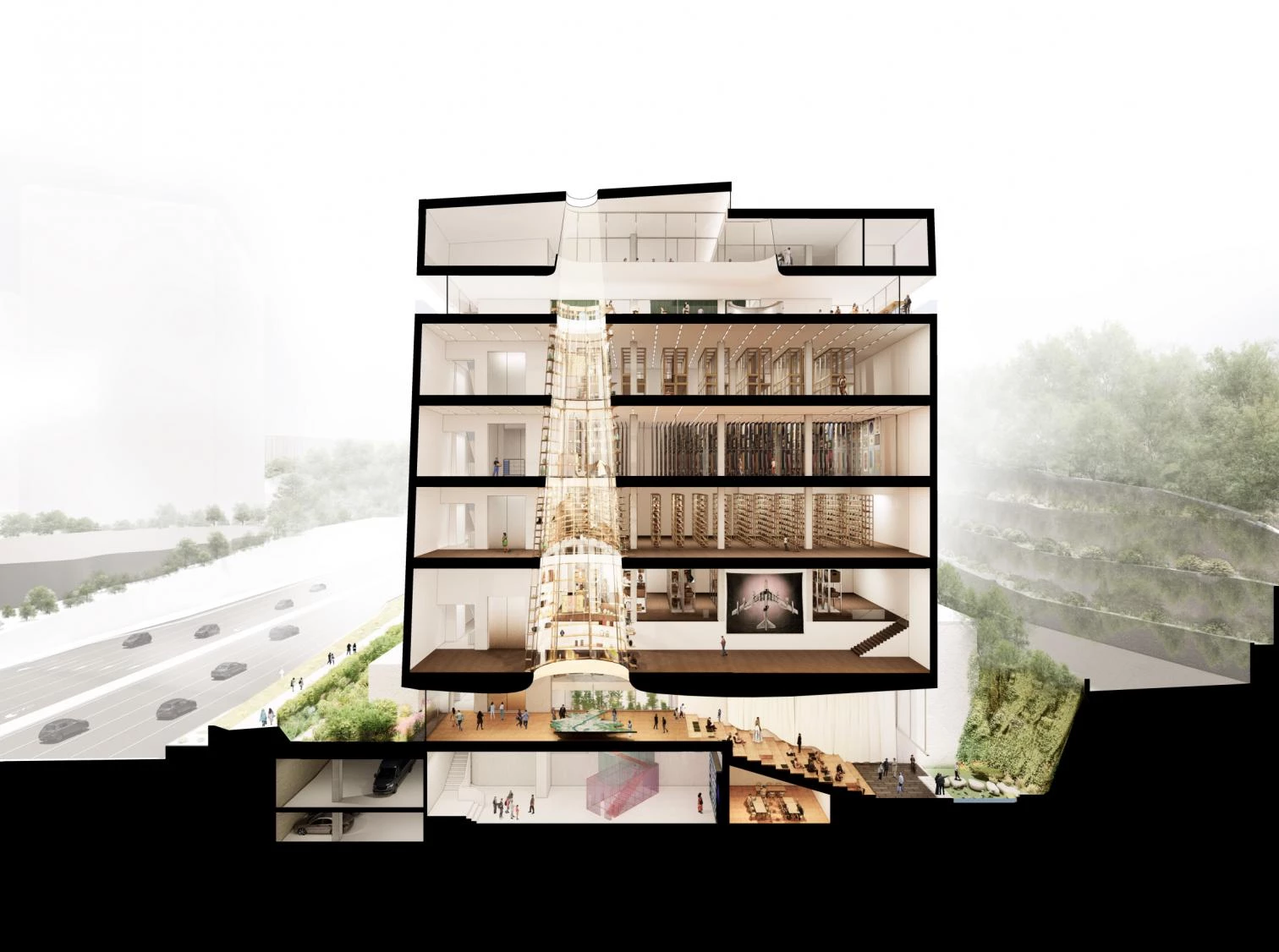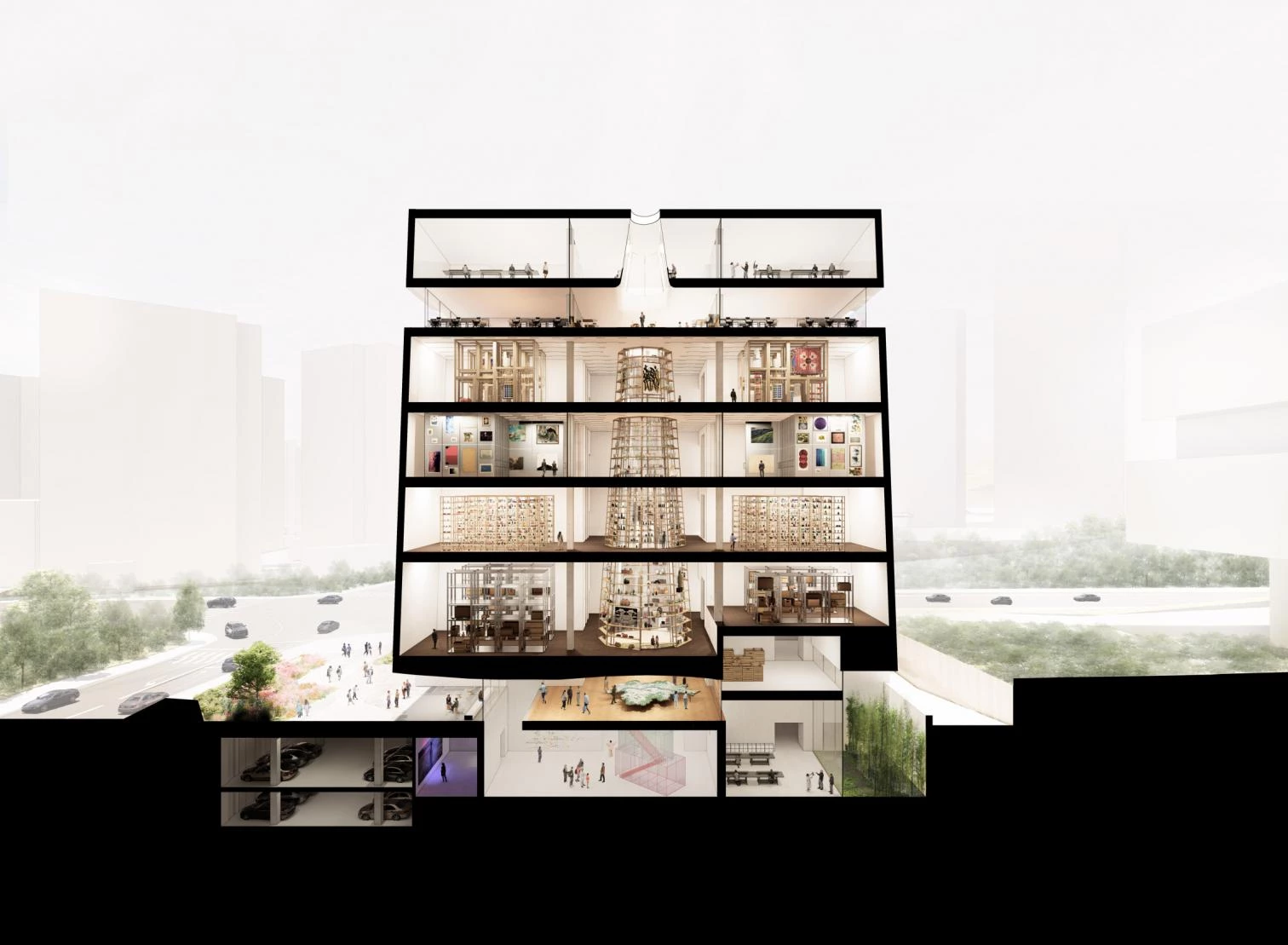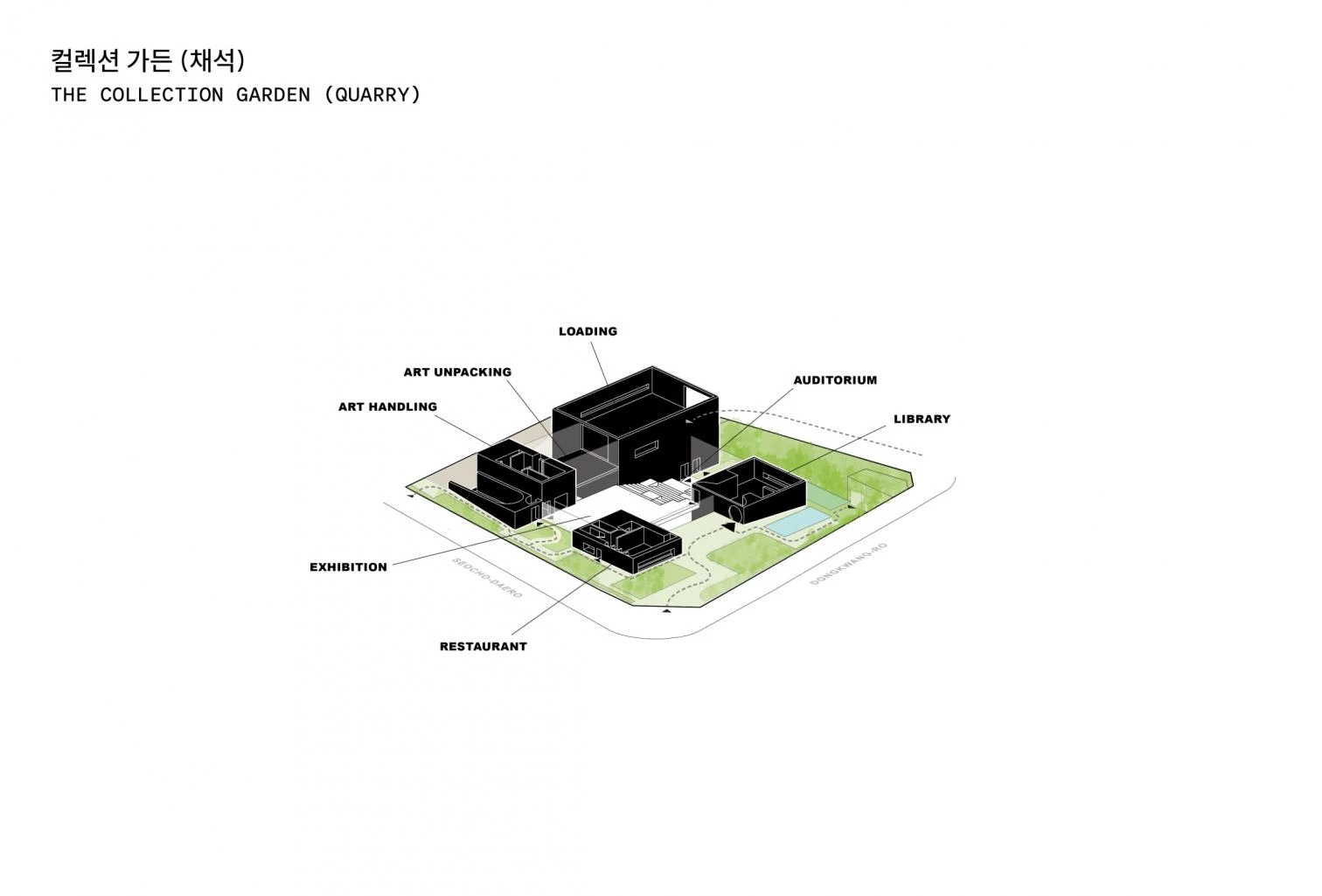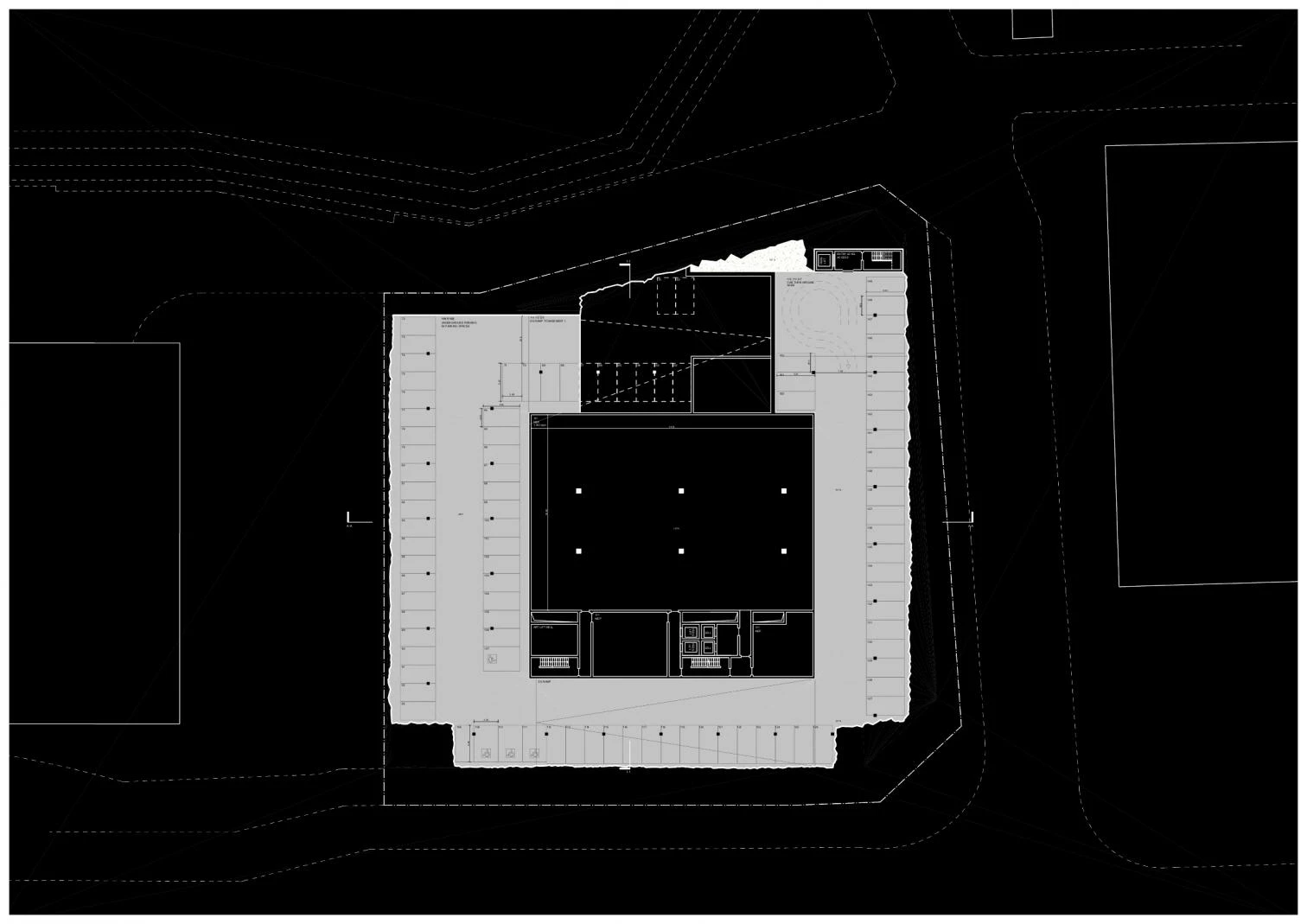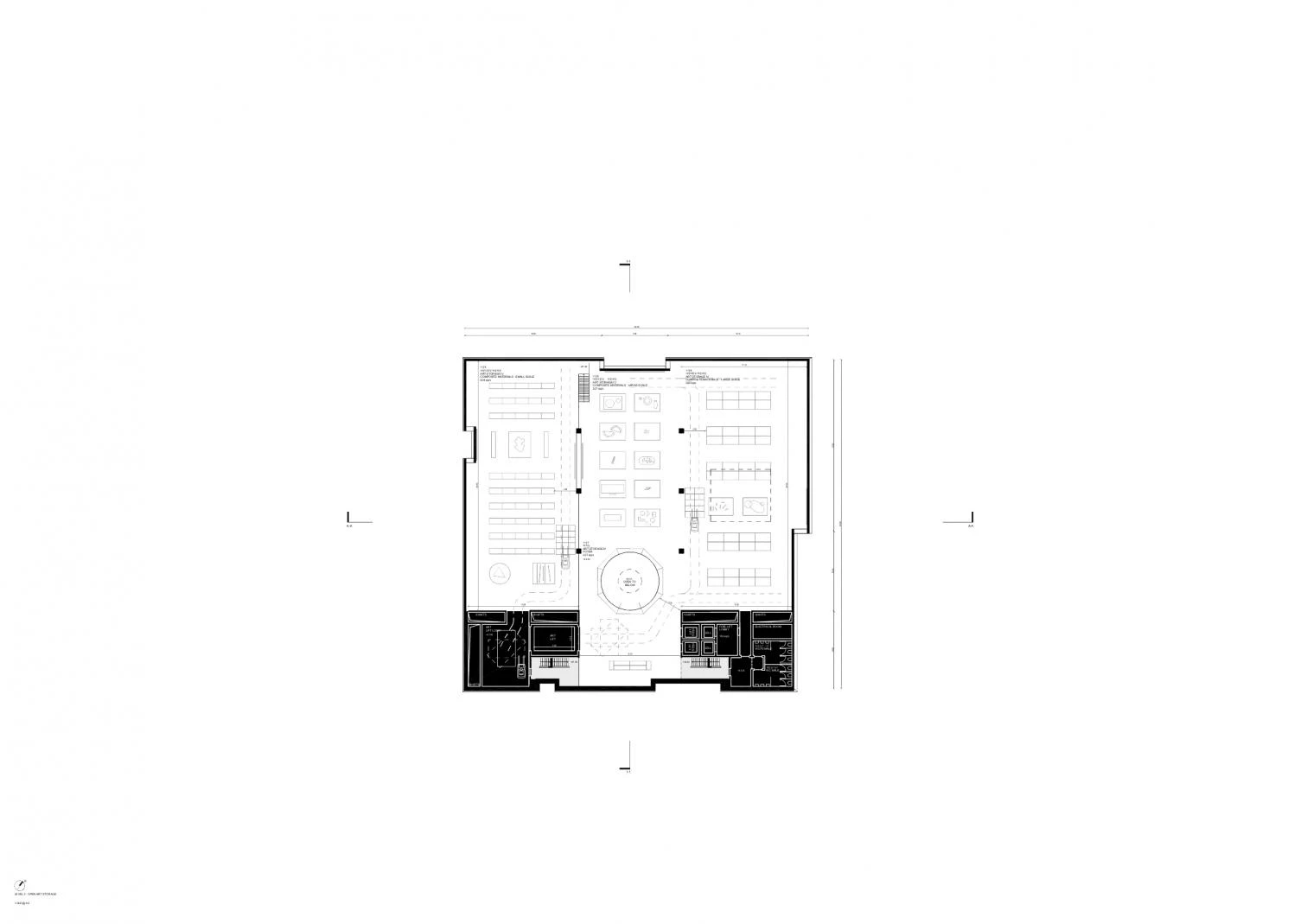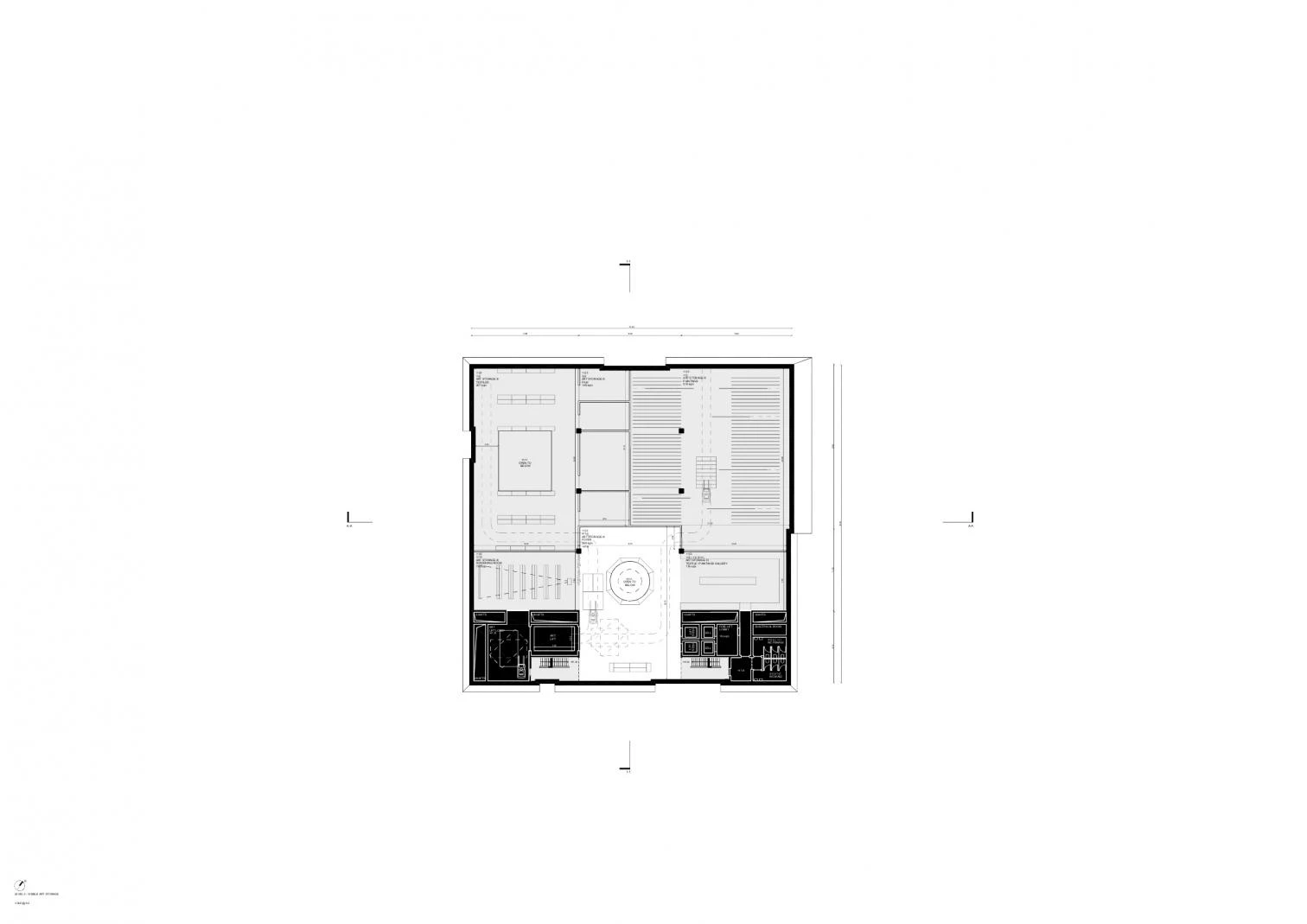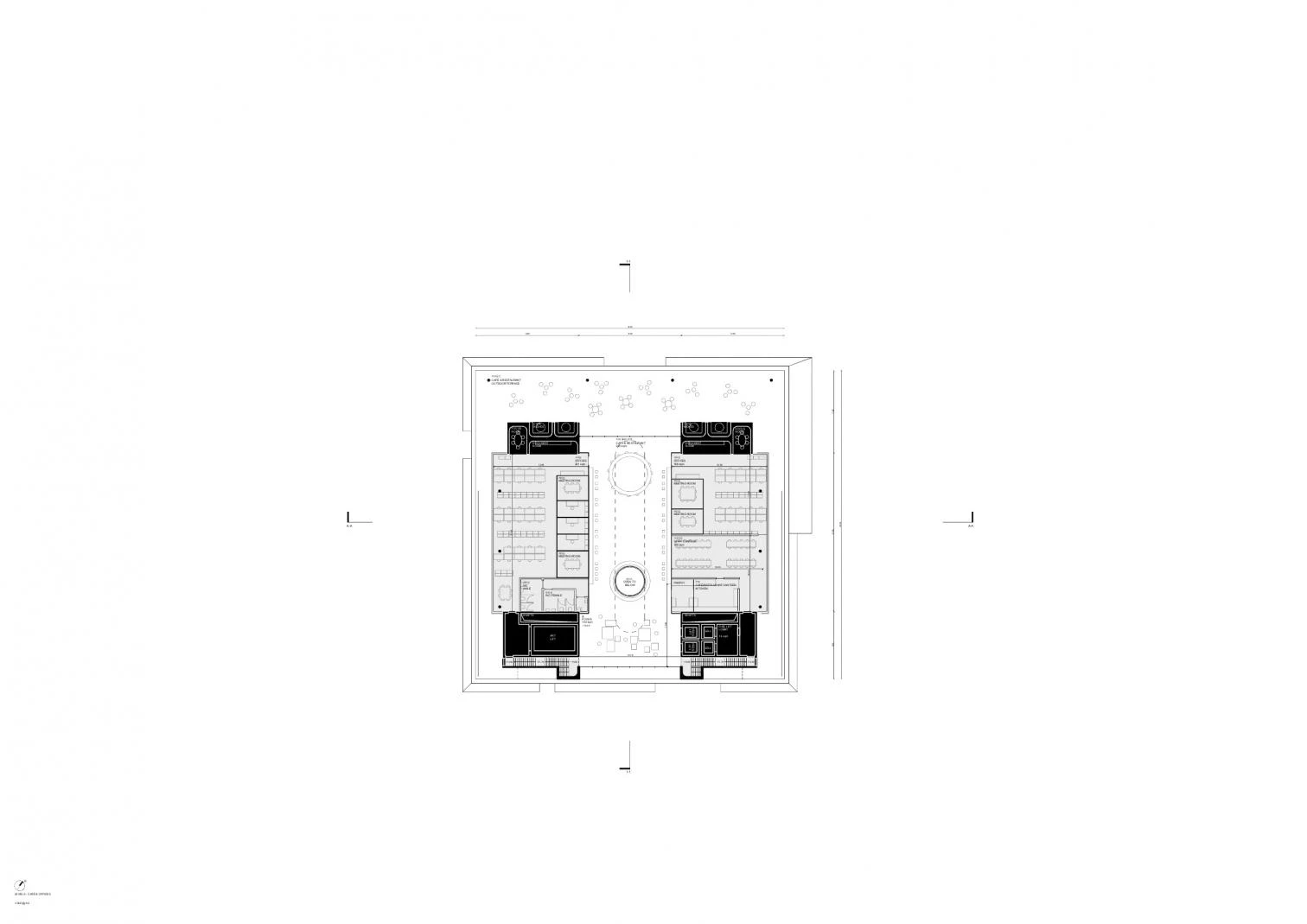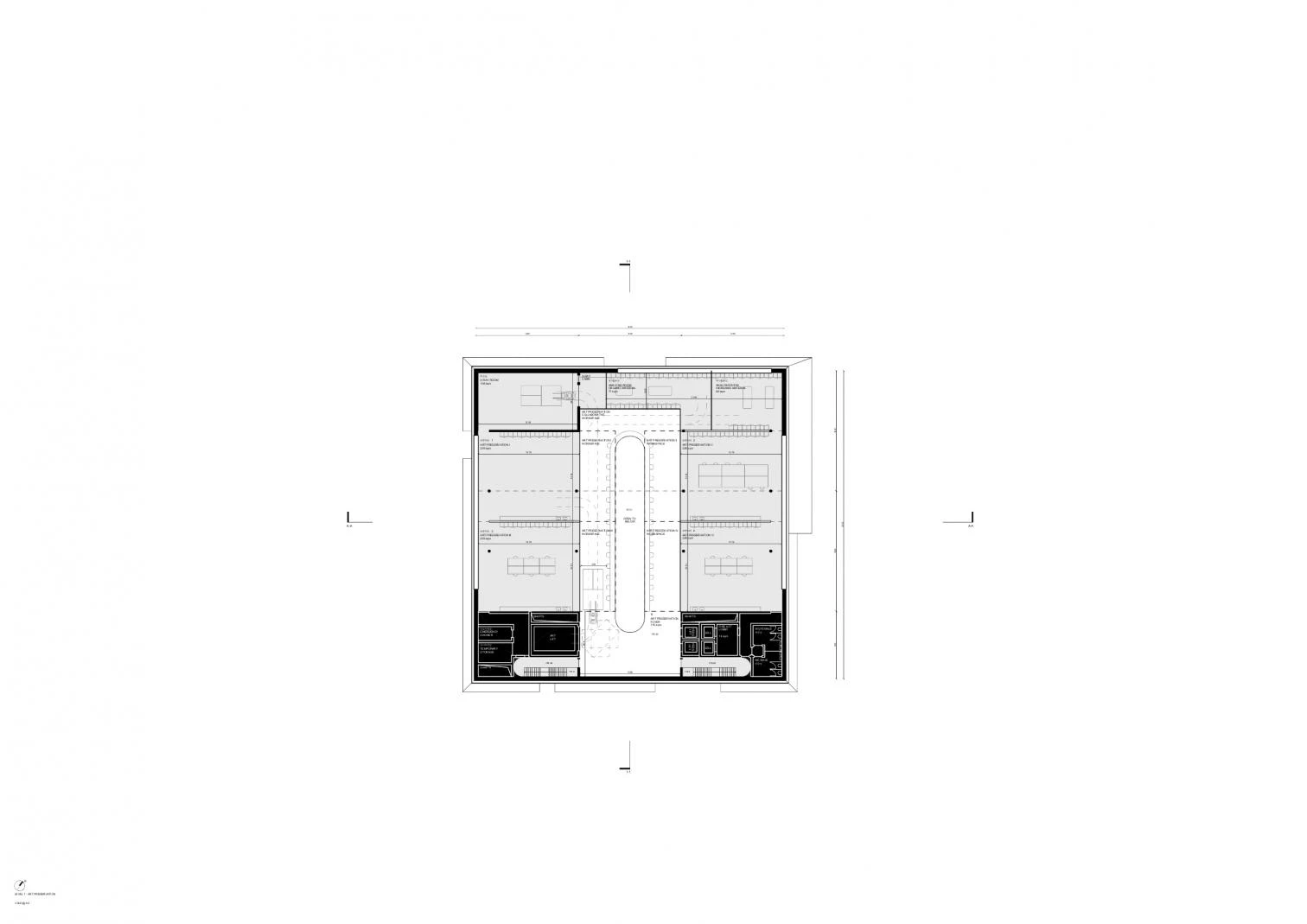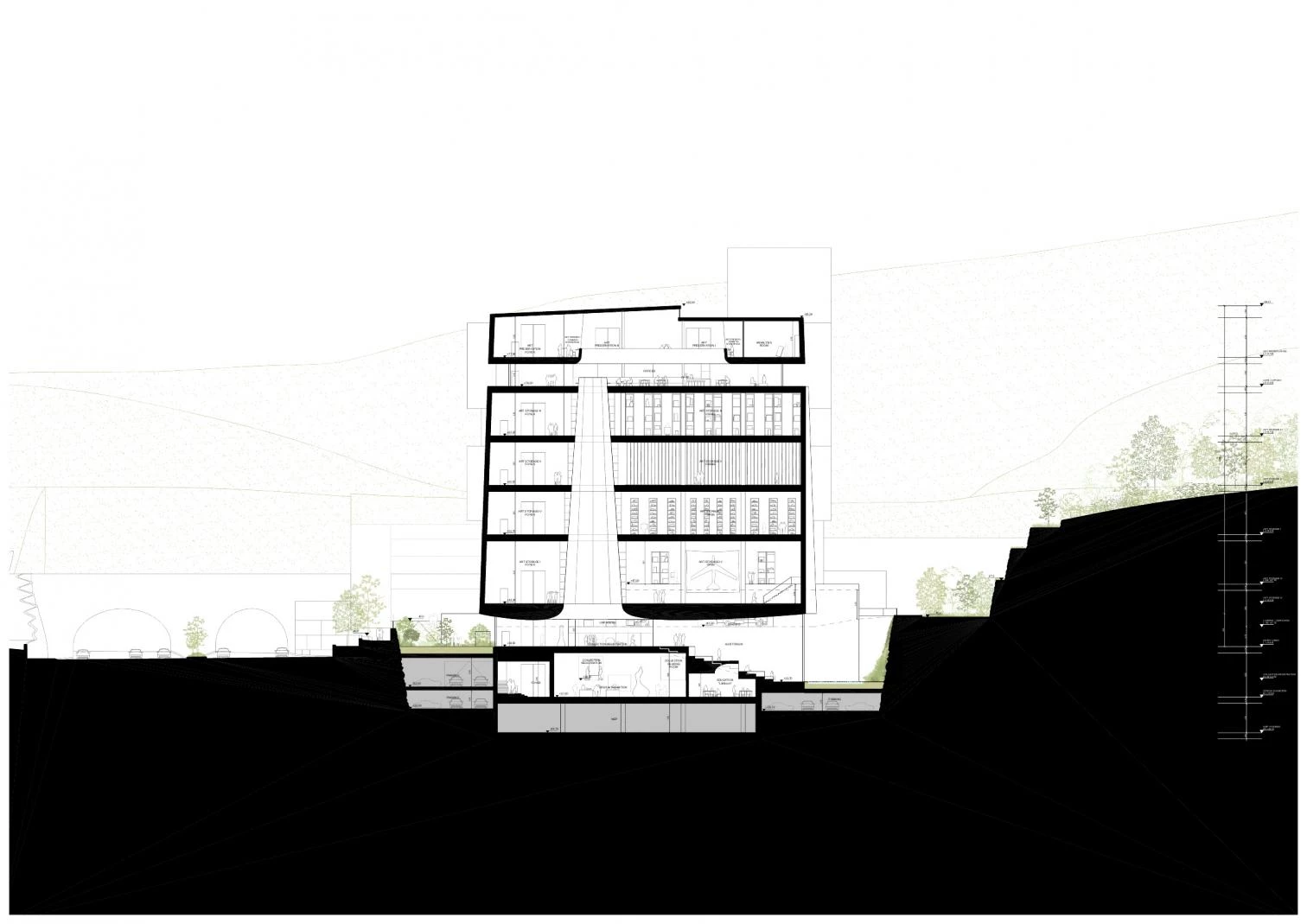The Swiss firm Herzog & de Meuron has won the competition for the building that will safeguard the archives of three major cultural institutions based in the South Korean capital: the Seoul Museum of Art, the Seoul Museum of Craft Art, and the Seoul Museum of History. The scheme it submitted carried the day over those drawn up by Foster+Partners, MVRDV, and 3XN, among others.
Located next to Seoripul Park and the Seoripul Performance Art Center, the glass-encased pyramid shape rises on four blocks and is surrounded with vegetation, in accordance with the traditional principles of the Korean garden. Seoripul Open Art Storage will not be only a repository for cultural and historical artifacts; it will also welcome visitors with an area for exhibitions, an auditorium, a library, a restaurant, and a café.
The excavations carried out will make it possible to reuse the gneiss rock for the construction of the stepped blocks that will serve as the base. The glass envelope of the storage volume is segmented on top, with a section for offices and a public café, and preservation workshops crowning the complex.
The collections will be placed on different levels (2–5) and organized not by museum but by materials, and thus by the climate conditions they require. Within the archives block, four climatized zones are stacked, perforated by a cone-shaped void that facilitates visual connections between levels. This glazed cone is equipped with display cabinets for the stored items. Hence, through visual connections, visitors will have a peep into a program that normally, in conventional archive buildings, stays out of sight.
The objective of the project is to achieve carbon neutrality through meticulous evaluation of emissions. This requires reducing the use of concrete, prioritizing products containing a high percentage of recycled material, besides incorporating photovoltaic panels, a system for harnessing rainwater, and a geothermal heat pump.
Seoripul Open Storage Museum Design Competition Public Presentation
